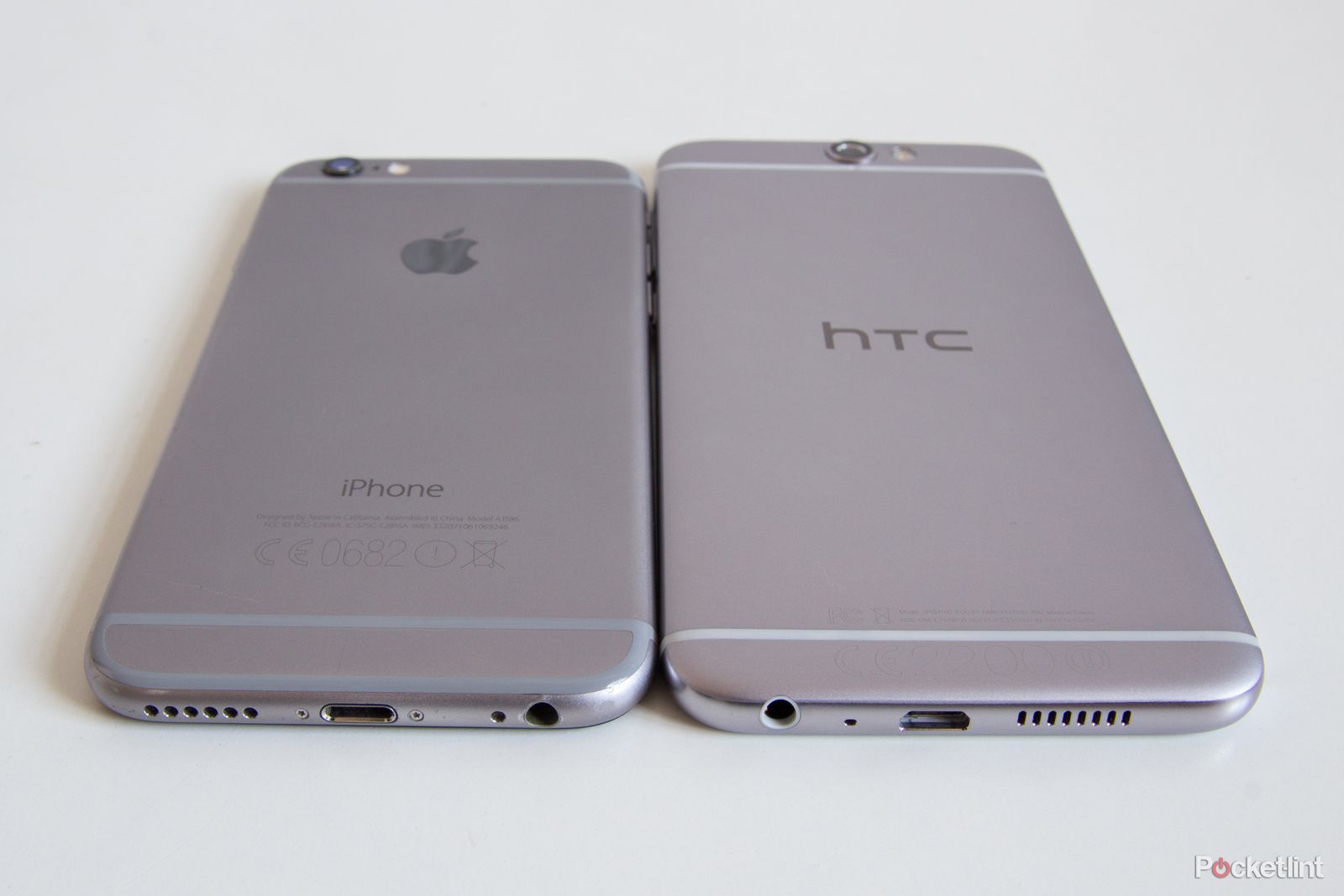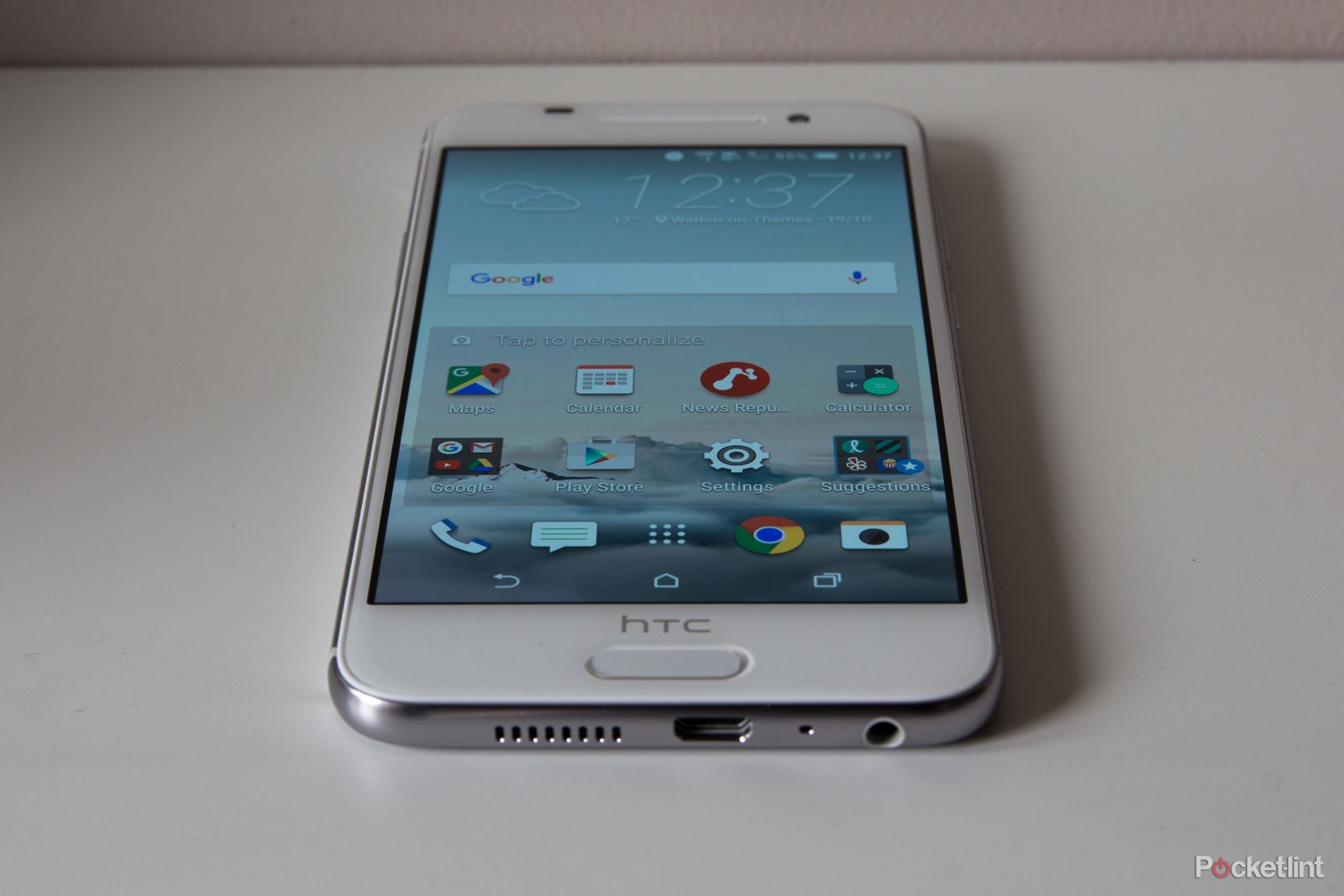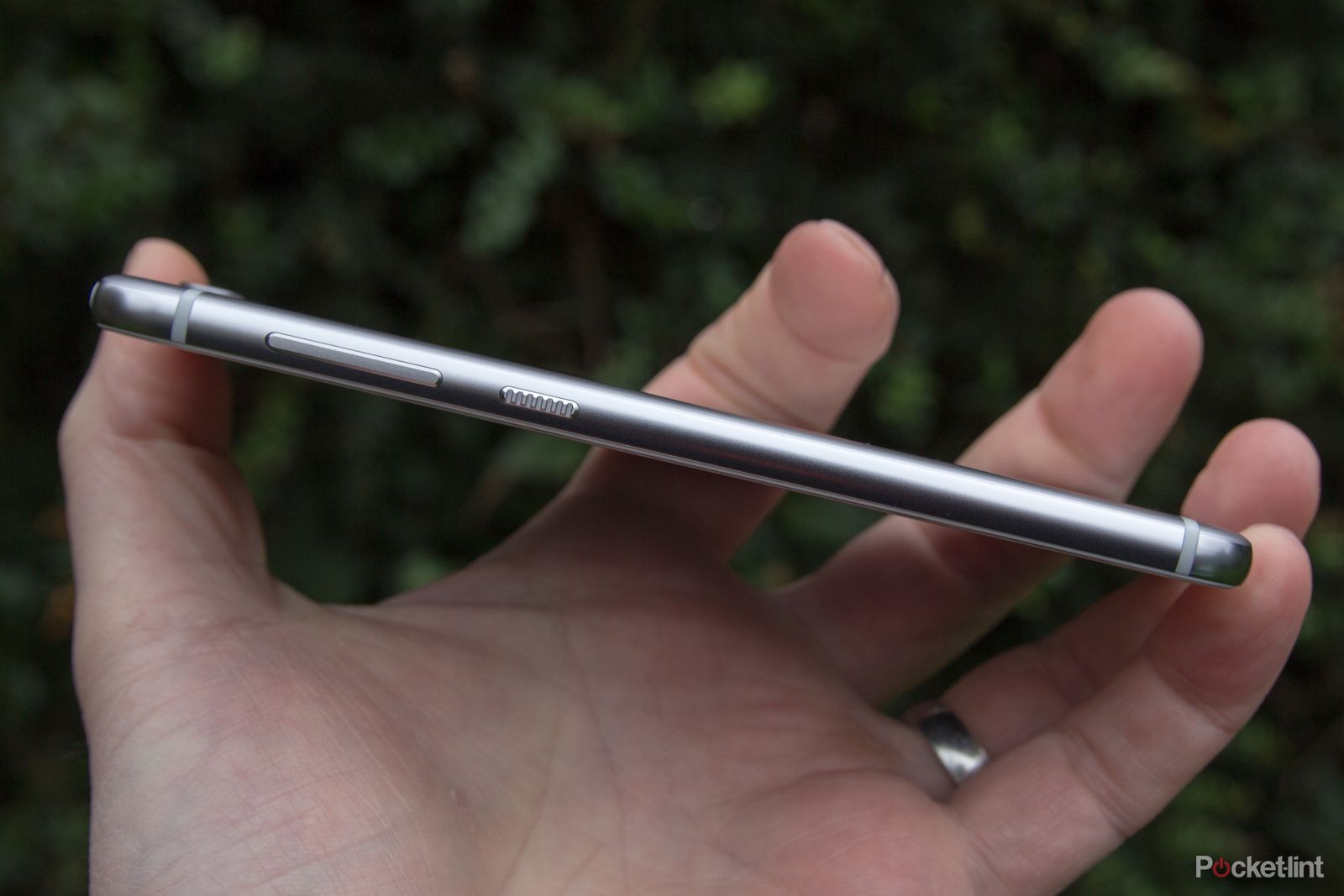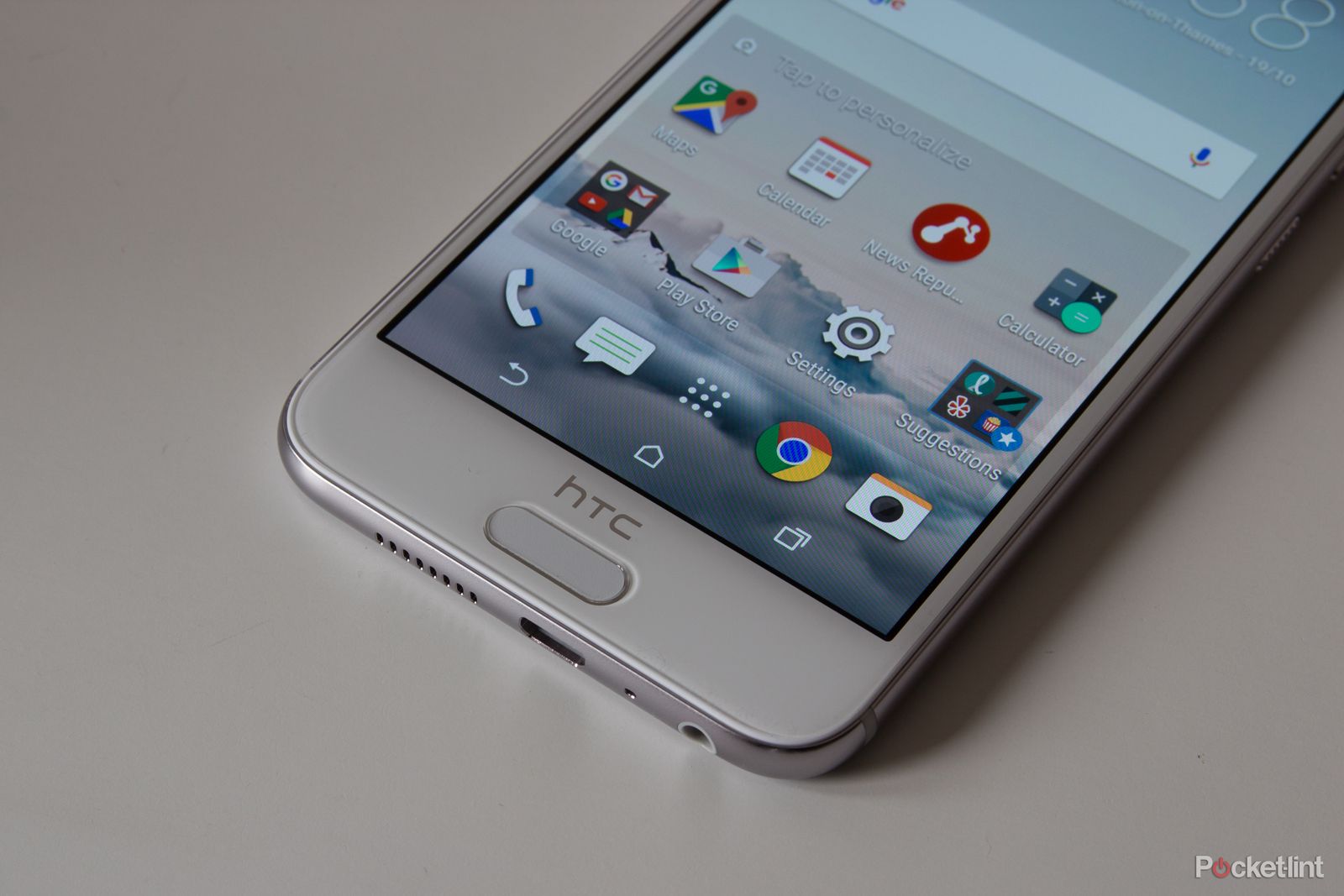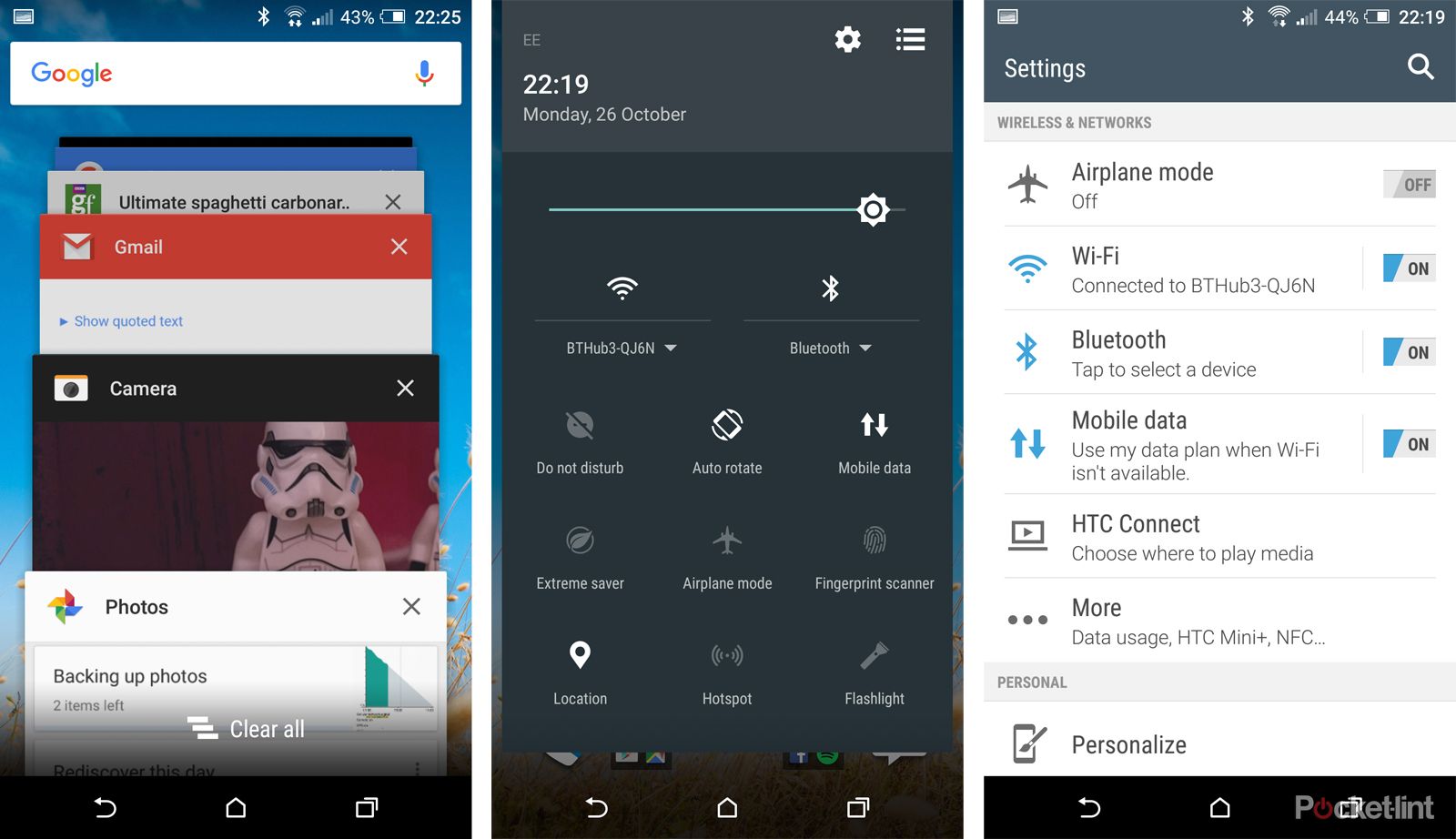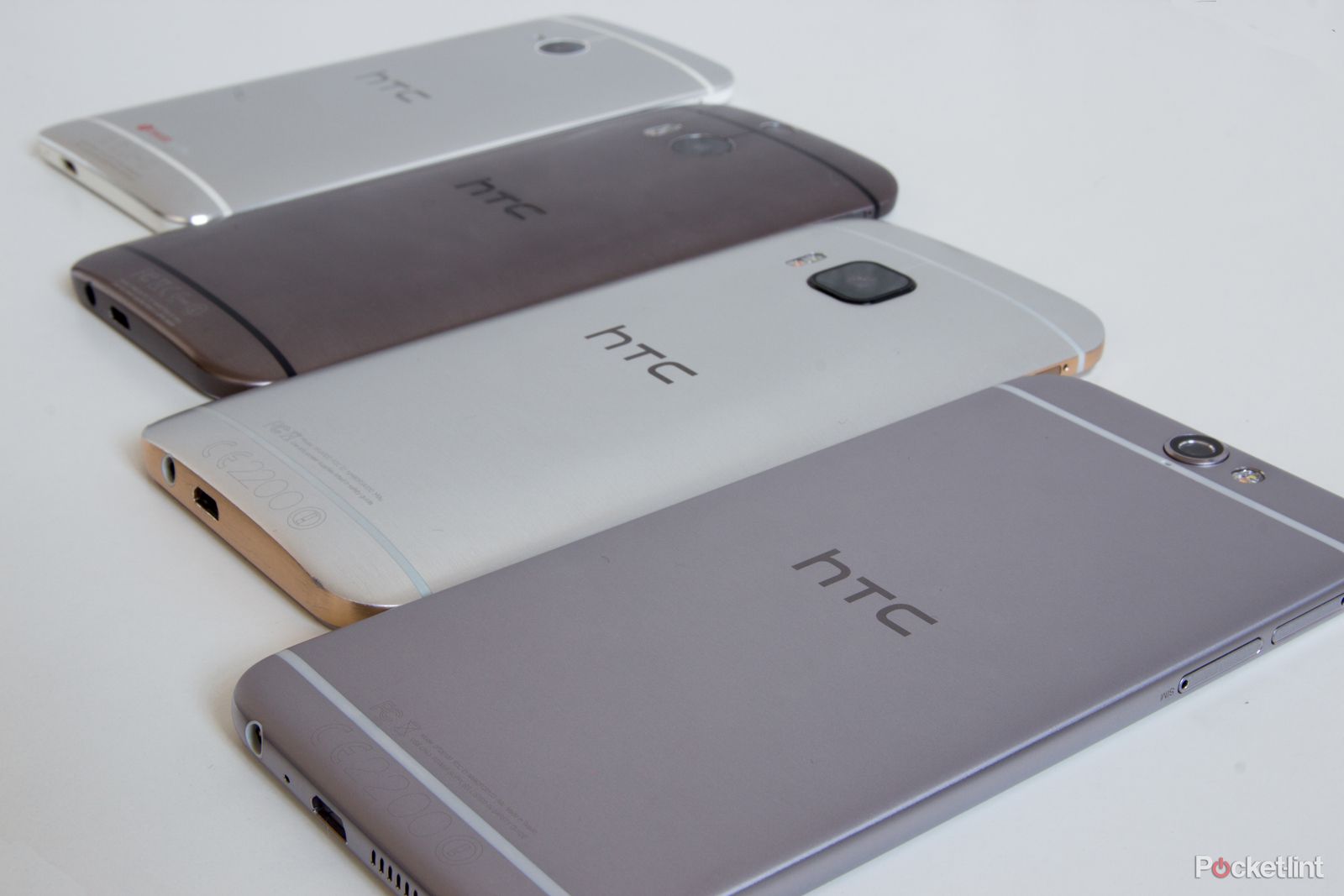If there's one trend that's emerged in 2015, it's that the mid-range or sub-flagship category of Android phones is arguably more exciting than those right at the top.
Our quick take
We love the HTC One A9 and we think it's the most exciting handset HTC has launched in 2015. We'd pick it over the M9 because it has charm that the flagship lacks.
Despite being less powerful and lesser featured, the A9 offers a number of advantages: the fingerprint scanner is fast and lovely to use; the design is wonderful, giving a feel in the hand that's superior to many rival devices; the battery life is surprisingly good; and the tweaks to the camera give a better experience than it's bigger brother too.
But the One A9 is a handset that's likely to be discussed in two circles: one for the close design parity to the iPhone 6 and one for the price being too high and out of parity with the device in the US.
That's a real shame, because this is a phone that Android fans should flock to. It's a phone that those starting to get bored of HTC should be drawn to. We love using it and will continue to do so, but we can't help feeling that with competition so strong, the One A9 will never have its moment in the spotlight.
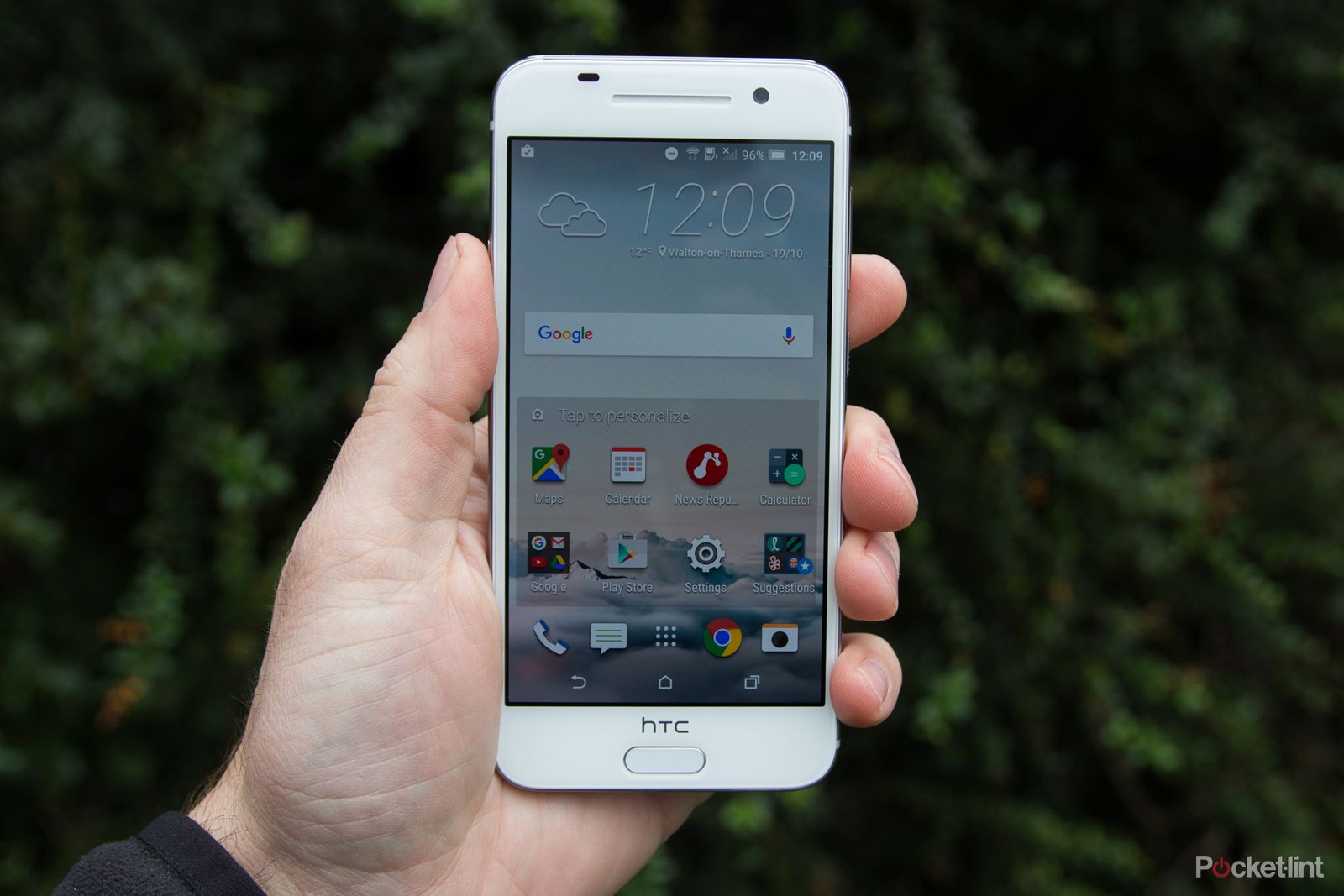
HTC One A9 - 4.0 / 5
| FOR | AGAINST |
|---|---|
|
|
We've had the strong endurance of the Moto X Play, the incredible pricing of the OnePlus 2, as well as a number of devices that offer plenty of power without selecting the top hardware. It's the emergence of a middle class that's more powerful and attractive than ever before.
It's into this space that the HTC One A9 muscles in. It is, unquestionably, the most premium of devices that we've seen in this space, with a design and build that puts most others to shame, whether that's in the mid-range or at flagship level.
But it's a phone overshadowed by one thing: the design of the iPhone 6. So is the HTC One A9 an ill-judged copycat, or is this the most exciting phone we've seen from HTC this year?
HTC One A9 review: An air of iPhone
HTC has always had a flair for design, but with the One A9, it's going to be impossible to talk about it without a mention of the iPhone. There is a resemblance between the One A9 and the iPhone 6, thanks to the same techniques used in machining and construction.
At first glance, many will think it's a copycat design. Whether that was HTC's strategy or not is something of a moot point, however it's worth saying that this is very much about taking the HTC Desire family design and applying HTC One family techniques to it: the A9 brings the profile of recent Desire devices and applies that to a full-metal body.
The result might have a resemblance to the iPhone, but it's easy to see that this hasn't been plucked out of thin air. After all, the metal HTC One (M7) was launched in 2013 and Apple's metal-bodied iPhone didn't appear until 2014, and there's nothing on the One A9 we can't recognise from previous HTC devices.
So yes, these devices look similar, but we've also said that we think the iPhone 6/6S is one of the best designed and most premium smartphones around. Apple and HTC might come to blows about it, accusations about originality might be cast, but we love the look and feel of the HTC One A9.
HTC A9 review: Outclassing the M9?
Size wise the A9 measures 145.75 x 70.8 x 7.26mm and weighs 143g, so it's a little larger than the iPhone. It's slim, with great curves to the edges, stepping away from the sharp precision of the M9, making it a much nicer device to hold, and slimmer in the pocket.
There will be four colour options for the One A9 and we've been living with the Opal Silver option. Carbon Grey, Garnet Red and Topaz Gold will also be offered. Those mineral names are reflected in the finish, with a polished side meeting the bead-blasted rear. It's incredibly strokable and silky, and HTC has told us that each finish is slightly different to the touch.
We think it feels a lot nicer in the hand than the sharpness of the HTC One M9, but if we've one criticism, it's that it can get a little slippery. But the One A9 is exactly what we expect from HTC: it shows skill in construction and manufacturing, leading to a high quality device that's undoubtedly premium and one of the nicest Android phones we've held this year.
HTC One A9 review: Display
The HTC One A9 has a 5-inch Full HD display on the front. HTC is known for using LCD panels on its devices with some great results, but the One A9 is equipped with an AMOLED display instead.
The resolution fits the size, offering 1920 x 1080 pixels over that 5-inches to give you a 440ppi density. Where some competitors might be pushing higher resolutions, we've little to criticise with this resolution choice at this size.
The display is topped with Gorilla Glass 3, so should be nice and safe from scratches, plus the 2.5D curves to the edges make for a lovely smooth finish when swiping across the display.
As smartphone fans will know, AMOLED is the display of choice of Samsung, but HTC's display doesn't quite have the impact of the Samsung Galaxy S6. It's a little warm, so the whites aren't as bright, with things being a little towards the yellow end of the colour spectrum.
HTC One A9 review: Hardware and performance
While everything we've seen so far on the HTC One A9 is undoubtedly premium, many will look at the hardware to decide exactly where this handset should sit in comparison to its rivals, particularly the One M9.
The HTC One A9 comes equipped with a Qualcomm Snapdragon 617 chipset. This is one of Qualcomm's latest chipsets, offering 64-bit octo-core power. It might be a step down in some senses from the 800 series you'll find in many flagship handsets, but as we've seen over the past 12 months, the experience of using a device is so much more than just how powerful the hardware is.
The remarkable thing about the One A9 is that it doesn't feel lacking in power. It's very slick and smooth, and fast to navigate around the HTC Sense user interface. It feels like HTC's experience with the Android operating system is coming to the fore here, as the A9 is faster than many more powerful rivals, such as the Sony Xperia Z5.
It's also worth considering that this HTC is a light version of Sense running on Android Marshmallow, which helps in that regard. We'll go into more detail on that later.
Unlike the HTC One M9, the A9 doesn't get excessively hot when charging, or when under higher load. Yes, it doesn't have the raw power of the M9, so those interested in getting the best from the latest games, or who want 4K video capture, might find the One A9 lacking, but as a daily phone it's perfectly powerful enough. We had no problem playing games like Real Racing 3, and although they open a touch slower and consume the battery faster than some rivals, the A9 doesn't overheat and the game runs smoothly.
There will be two different models of the One A9, depending on which territory you reside. The first offers 2GB of RAM with 16GB of storage, the second (which is reviewed here) offers 3GB of RAM with 32GB of storage. Both will offer microSD card expansion up to 2TB. As we understand it, the UK version will be the 2/16GB and the US will be getting the 3/32GB edition.
As the A9 launches on Android 6.0 Marshmallow, you'll also find it offers Flex Storage. This little-talked-about feature will allow you to expand the overall storage of your phone, formatting the microSD card and using it for all the tasks you'd normally use internal storage for. It becomes seamlessly integrated, encrypted, and part of your device storage.
That might mean an end to hot swapping storage cards (do people do that?), but there's no need to worry that the 16GB model won't give you space for huge apps - because the microSD slot gives you plenty of scope for cheap storage expansion.
HTC One A9 review: Battery life
The HTC One A9 has a 2,150mAh battery capacity, which sounds a little on the low side, especially when many competitors are pushing 3,000mAh. However, HTC is promising that thanks to the efficiencies of the chipset and the software optimisation of Android 6.0 Marshmallow, you'll get good life out of it.
There's a little HTC magic going on here, because the battery performance is good. We've seen plenty of devices with nearly a third more battery capacity drain within a working day. Thanks to those optimisations, however, we've had the HTC One A9 reach the end of the day and into the next without needing a charger.
Of course, it very much depends on what you're doing with your phone. If you're working it hard playing games, then you'll see the performance quickly dip, but in general email, mapping, browsing and taking calls territory, we've found the HTC One A9's performance to be surprisingly good.
There's no wireless charging, but not only does it support Quick Charge 2, but there's support for Quick Charge 3 in the future as well. You will have to buy that quick charger yourself however, as there isn't one in the box, but thanks to the small capacity, you'll be able to recharge the One A9 very quickly.
HTC One A9 review: Fingerprint scanner
The fingerprint scanner has become 2015's must-have Android feature, with native support in Android 6.0, and appearing on the Nexus 5X and 6P devices, along with lots of others. We'd now struggle to recommend you buy a new device without one.
The implementation of the fingerprint scanner on the HTC One A9 appears to be identical to that of the One M9+ we previously reviewed. It's placed centrally beneath the display, supporting up to five fingerprints for unlocking.
The fingerprint scanner is really fast, and the position is natural enough for unlocking. The scanner can also be used as a home button, returning home from any screen with a tap - much like the OnePlus 2. It's not a clickable button, though, so not as versatile as the Samsung Galaxy S6 implementation, but it's lightning fast and we've found it faster than the Nexus 5X, for example.
HTC One A9 review: BoomSound headphones
One of the big changes from previous One devices is that the BoomSound speakers have now gone. That gives for slicker lines, and a design that's more compact, but some will say that this is HTC leaving out one of its signature features.
There's a single speaker on the bottom and it's average in performance, but in reality, you'll be pushed towards using headphones for this device, where you aren't always with something like the One M9.
HTC is looking to ramp up the headphones, now saying that BoomSound is in the headphone experience. As with the One M9, there's Dolby Audio looking to add a lift to your music, with the option of engaging HTC BoomSound with Dolby Audio when your headphones are connected.
There are a range of settings specifically for HTC's headphones or an "other" setting if you're using a different pair. We found that the "other" setting worked the best for the Grado headphones we tested the phone with, but you're free to choose whichever you prefer. There's no freeform EQ to tweak the sound though, it's BoomSound or nothing.
We fired up Tidal, streaming in hi-fi quality, and found the performance more natural without engaging HTC's BoomSound enhancement, although the boost to the bass may well suit those who want a little more drive.
HTC also says that the One A9 is equipped with a higher quality DAC, aiming to upscale your music to 24-bit and with a higher power output - so it will drive more demanding headphones. We've certainly no complaints about the sound quality from this device through headphones, but do rue the passing of BoomSound speakers.
HTC One A9 review: Camera
The camera on the HTC One A9 is perhaps its most anticipated aspect. As with many of HTC's previous devices, the HTC One A9 has the UltraPixel sensor on the front for all your selfies. That gives results that are typical, natural, with the option for a makeup mode to smear yourself into generic conformity if you want.
We've had some good quality selfies, but have noticed that in low light they can take on something of a pink tinge - the same affliction that blighted the One M9. There's now the option for HDR on the front camera, a useful option for balancing out some scenes you might find yourself in.
On the rear of the One A9 there is a 13-megapixel camera with optical image stabilisation (OIS). It's been a while since we've seen OIS on an HTC handset (mostly thanks to a number of other technologies, like Duo Camera) and it's a welcome addition here.
The camera is placed centre top on the rear of the One A9, accompanied by a dual tone flash. It's slightly raised, but topped with sapphire crystal to keep it free from scratches.
The HTC One A9 suffers for not having auto HDR, which the likes of the Sony Xperia Z5 or Samsung Galaxy S6 really benefit from, by boosting dynamic range without your constant intervention. On the A9, that results in scenes that are dominated by the highlights, or stuck in the gloom of the shadows, leaving the user to poke the HDR option in the camera app to balance things out.
Colours are a little flat from the A9 camera in auto mode, a step behind the best, leaving us wanting a little more richness. Autumnal hues looked a little muted, lacking punch and the contrast they really need. At least that can be changed post-shooting for best results, but this isn't the strongest camera out there.
One of our criticisms of the M9 was that the camera resulted in slightly yellowy images and the A9 doesn't seem to suffer with quite the same affliction, giving slightly cooler results, although on a bright day out the One A9 seems to struggle, a little like the M9 did, by failing to make the most of the scene presented before it.
In lower light with slower shutter speeds, the optical image stabilisation makes itself obvious on the A9, retaining sharpness where you'd have shake on the M9. The processing in low light doesn't appear to be as aggressive, so detail is retained, but image noise still rises, evident in shadows from ISO 400 upwards.
The sensor pixel size is 1.1µm, and to put that into context, the Nexus 5X has 1.55µm pixels, the iPhone 6S has 1.22µm pixels - the theory being that the bigger the better. As we know from HTC's previous messaging around UltraPixel (2.0µm) the larger the pixels the better they are for catching light, which perhaps explains some of the image noise that appears here as light dips.
Better results can be obtained from the Pro mode, that gives you full manual controls and shoots in raw format, although you can tap to revert to JPEG only. It's a cleaner approach than previous HTC camera apps, as you just switch to Pro mode to take control of white balance, focus, ISO - importantly being able to keep it low - while you lengthen the exposure in low-light situations, although it's limited to 2 seconds, which is a little restrictive. If you've gone to the effort of setting the phone up for manual shooting like this, you want to be able to select something longer for better low-light photos.
The camera app changes are a success as far as we're concerned, as it's faster to engage the modes you want, with less digging in menus. As we understand it, these camera changes will be coming to other HTC devices too.
HTC One A9 software review: Android 6.0 Marshmallow with Sense 7
It's something of a coup that the HTC One A9 launches with Android 6.0 Marshmallow. There are other devices just launched or about to launch on Lollipop, but with the A9 you have the very latest from Google.
Not only that, but the One A9 launches with a version of Sense called Sense 7_g. That _g part refers to Google, as this is a special build for this device, rather than a dot increment you'll find rolling-out to older phones. The big difference is that this is closer to stock Marshmallow, and a lighter offering than previous HTC Sense iterations.
That's a good move in our book, because there's less duplication and bulk, an overall reduction in bloatware and features, with HTC only adding the elements that it sees as essential. There's no HTC music player, for example, and the phone doesn't come preinstalled with Facebook or other apps. Like a Nexus device, you're left to make the decisions about what you want yourself.
However, this is still a Sense device, so you get some of the great features that HTC offers, like Themes and BlinkFeed. In the apps tray you still get to customise things, make folders and change the grid size, which we've always liked.
But elsewhere HTC's customisations are gone. Recent apps is the stock card-style arrangement of Marshmallow only, with no grid offered. The volume controls are again stock Android, as are the Quick Settings. Where HTC doesn't need to make changes, it hasn't. Some features are gone, but we can't say we miss any of them because Android has stepped in - and there's no point in excessive duplication.
There is some duplication of apps, naturally. You get Google's photos as well as the HTC Gallery, but that's because the latter supports functions (raw processing) that Google doesn't. The same applies to the calendar, although arguably, Google Calendar's clean visuals have the jump on HTC's interpretation anyway.
HTC says the aim was to deliver a device that lets Marshmallow shine through and that's what it feels like in the One A9. Setting the phone alongside the Nexus 5X, it's as slick and fast as that raw Android handset, but with some of the refinement that HTC brings.
The result is a handset that avoids bloat, remains fast and has a lot of charm. It makes the HTC One M9 feel dated, and although that older device is the more powerful phone, we're drawn to the One A9's lean efficiency. HTC has also said it's aiming to bring the latest updates from Google within 15 days, which is indeed an ambitious aim.
HTC One A9 review: Price
If you were waiting for a "but", it's in the pricing that you'll find it. HTC is known for making fairly expensive handsets, and the One A9 is no exception, especially in Europe.
We mentioned that there were two versions of the One A9 and there seems to be two sets of pricing for the One A9 too. In the UK, HTC reported the SIM-free pricing as £429 (for the 2GB/16GB version). That's expensive for this spec of device, although we'd argue that spec alone doesn't define the value of this phone.
In the US the headline figure is $399.99, although that's a limited offer and only runs until 7 November. After this time, the price moves back up to $499.99. If you're in the US you might want to get in early for the best price, but still, that US price is around £100 cheaper than the cost in the UK - and it'll be the better 3/32GB handset too.
Given the context into which the One A9 launches, with the likes of the closely-specced (but not as well executed) Moto X Play at £279, or the "flagship killer" OnePlus 2 at £239, the leap to the One A9 price is almost dizzying. We've even seen it priced at £470 SIM-free from Carphone Warehouse. At which point, it's a mid-range device at flagship prices - which doesn't make sense.
To recap
The HTC One A9 is HTC's champion phone, despite it being a sub-flagship. We love using it and will continue to do so, but we can't help feeling that with competition so strong, and with its price so high, that the A9 will never have its moment in the spotlight.

